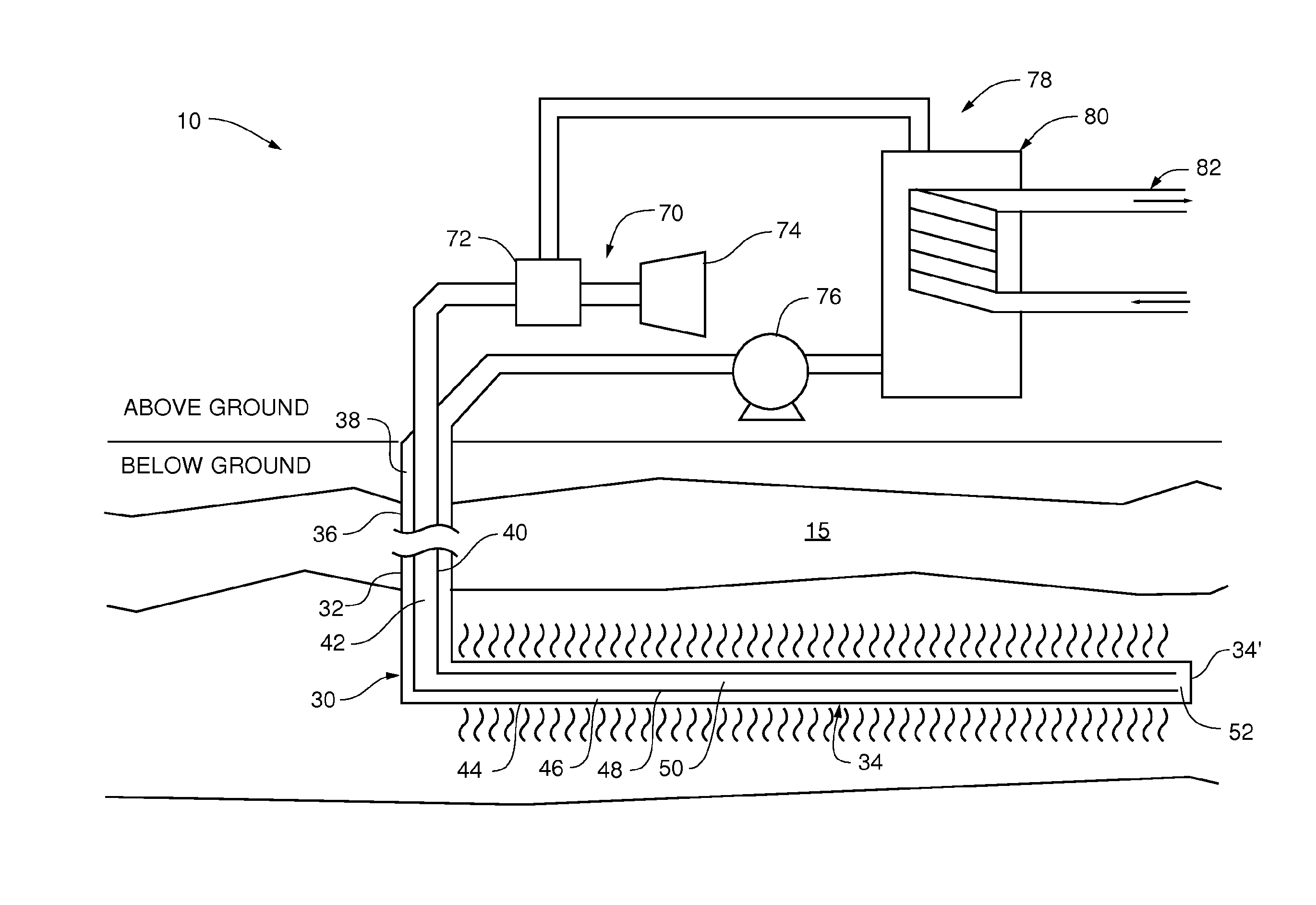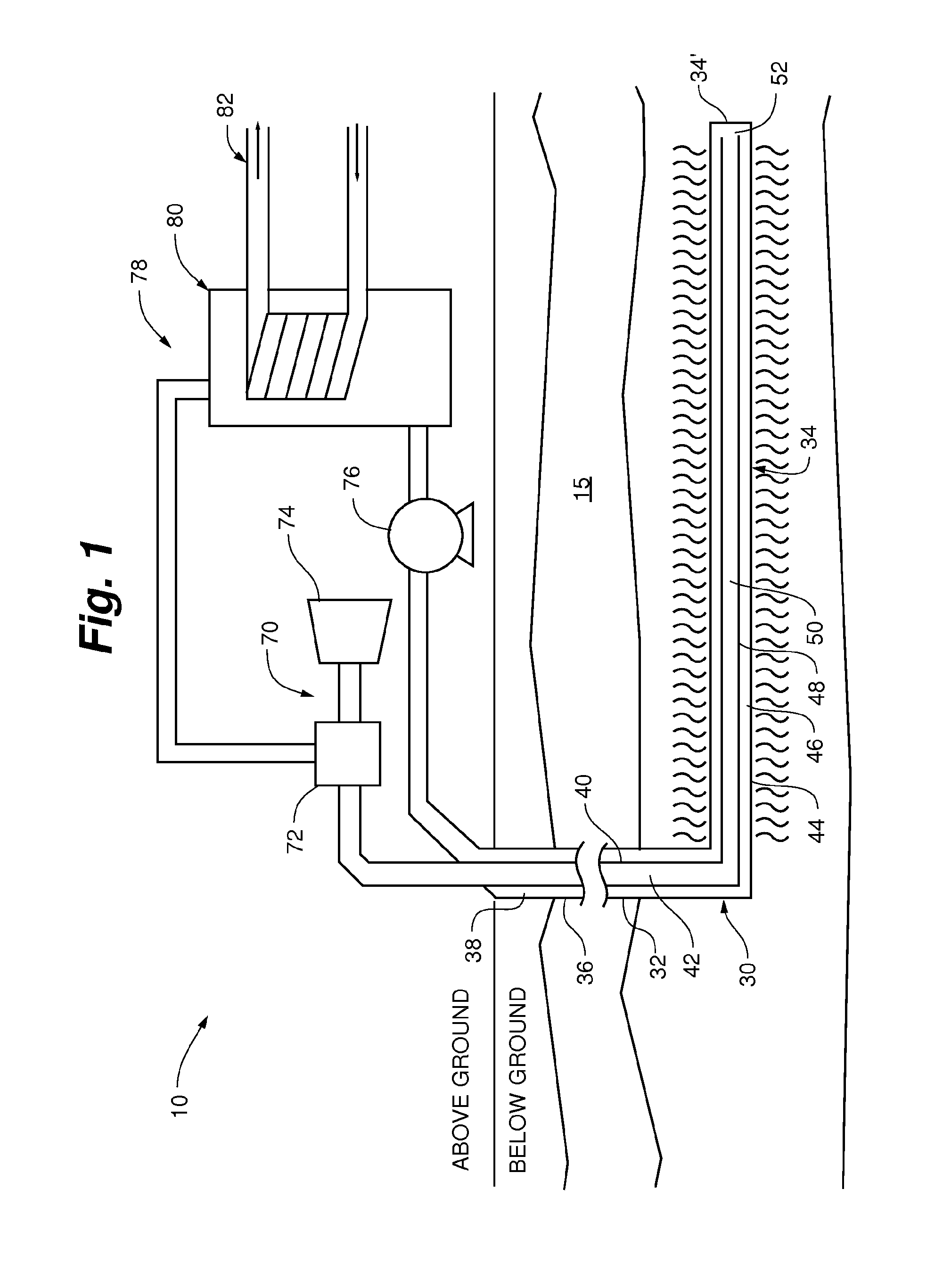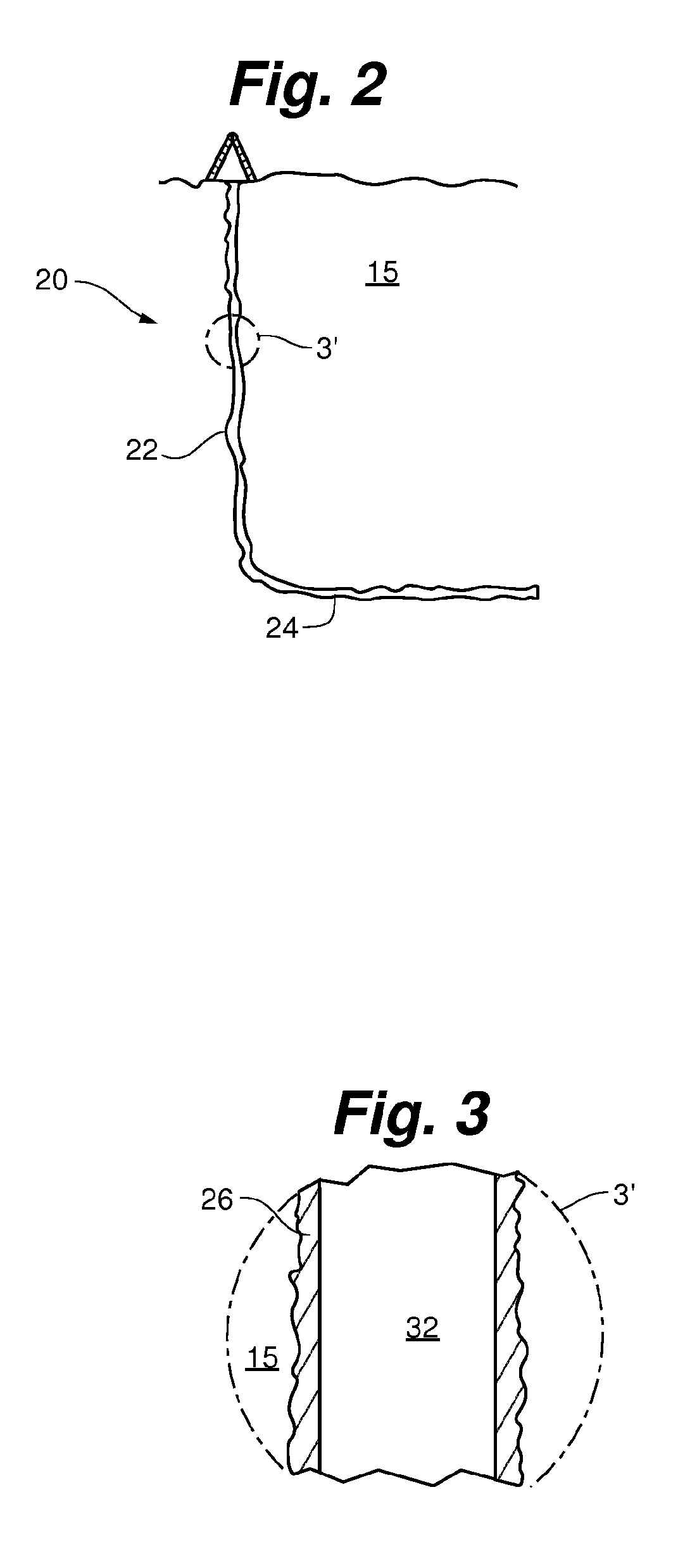Passive heat extraction and electricity generation
a passive heat extraction and electricity generation technology, applied in mechanical equipment, lighting and heating equipment, machines/engines, etc., can solve the problems of subterranean environmental pollution of water reservoirs, natural or artificial replenishment of mined fluid, and inability to artificially replace mined fluid through reinjection, etc., to facilitate thermal energy transfer, increase contact surface area, and increase heat exchange efficiency
- Summary
- Abstract
- Description
- Claims
- Application Information
AI Technical Summary
Benefits of technology
Problems solved by technology
Method used
Image
Examples
Embodiment Construction
[0045]As shown in FIG. 1, according to an aspect of the present invention, a wellbore at least partially extending through to a heated subterranean zone is coupled in fluid flow communication to a power production facility so as to form a closed-loop system 10. A working fluid can circulate through the closed-loop system 10 thereby facilitating the conversion of the produced energy into other useful forms of energy.
[0046]As shown in FIGS. 1-5, according to an aspect of the present invention, a system 10 for harnessing thermal energy from a subterranean zone generally comprising a well bore 20, a bi-directional transfer pipe 30 within the well bore 20, and an output apparatus 70. In some aspects, the well bore 20 comprises a substantially vertical wellbore section 22 and at least one angled wellbore section 24 extending from the vertical wellbore section 22 in a substantially horizontal configuration into one or more desired subterranean zones 15.
[0047]As shown in FIGS. 1-5 and 14, t...
PUM
 Login to View More
Login to View More Abstract
Description
Claims
Application Information
 Login to View More
Login to View More - R&D
- Intellectual Property
- Life Sciences
- Materials
- Tech Scout
- Unparalleled Data Quality
- Higher Quality Content
- 60% Fewer Hallucinations
Browse by: Latest US Patents, China's latest patents, Technical Efficacy Thesaurus, Application Domain, Technology Topic, Popular Technical Reports.
© 2025 PatSnap. All rights reserved.Legal|Privacy policy|Modern Slavery Act Transparency Statement|Sitemap|About US| Contact US: help@patsnap.com



